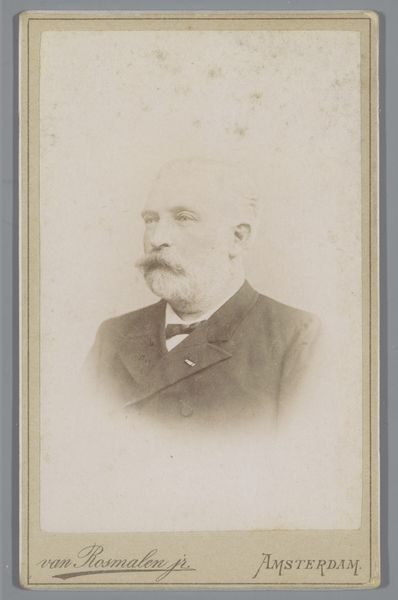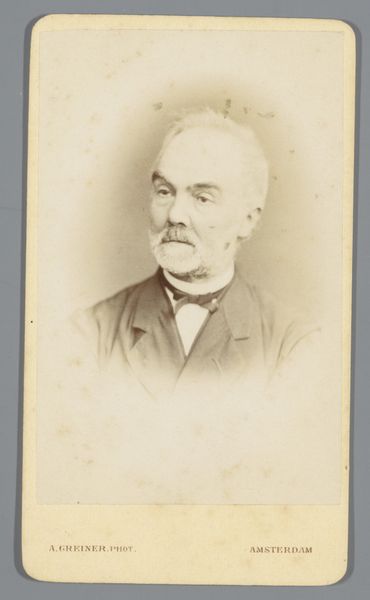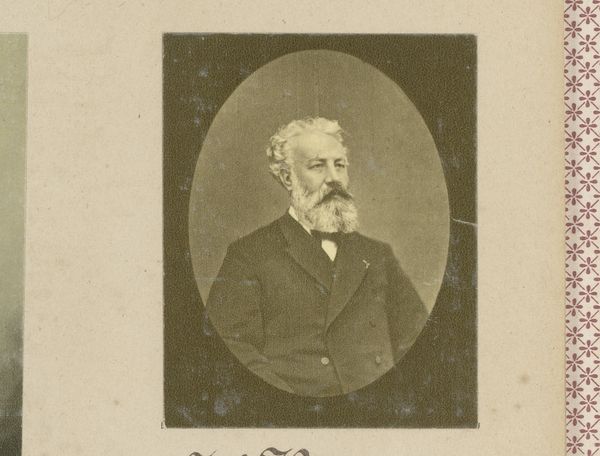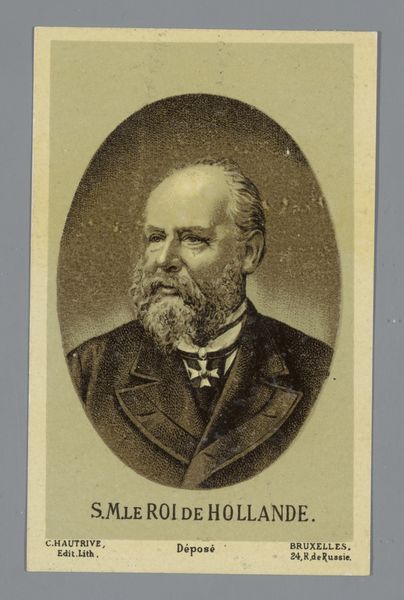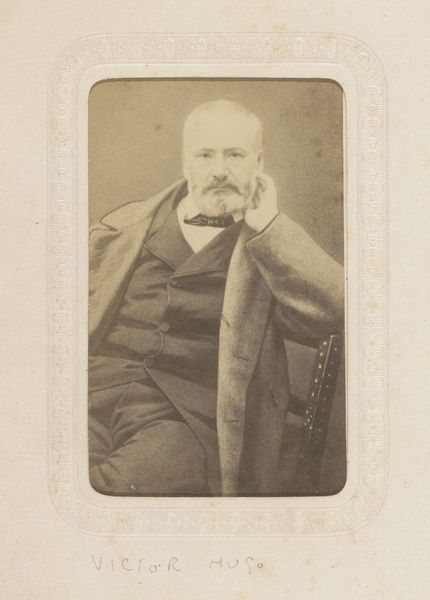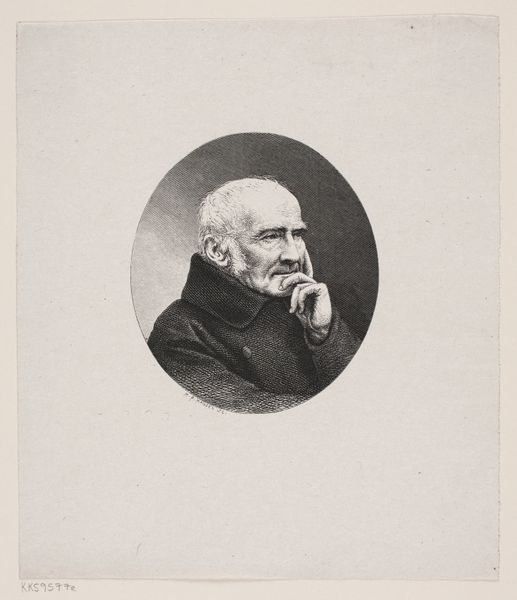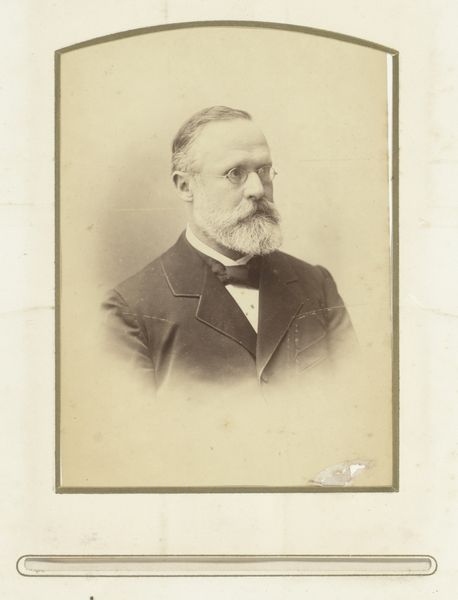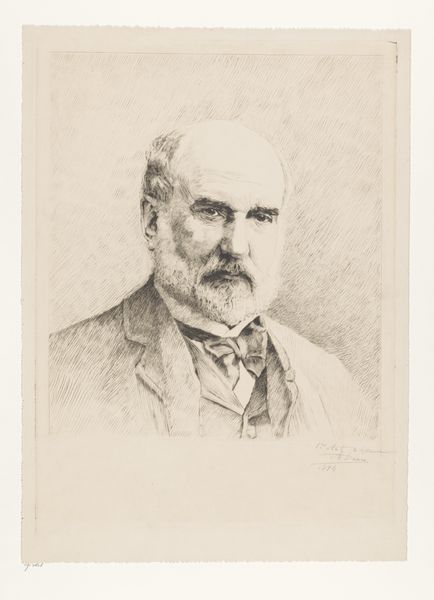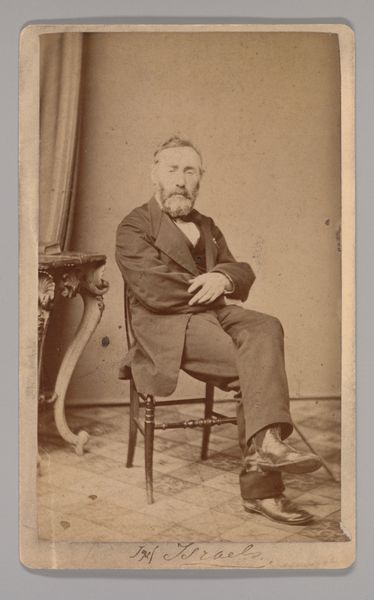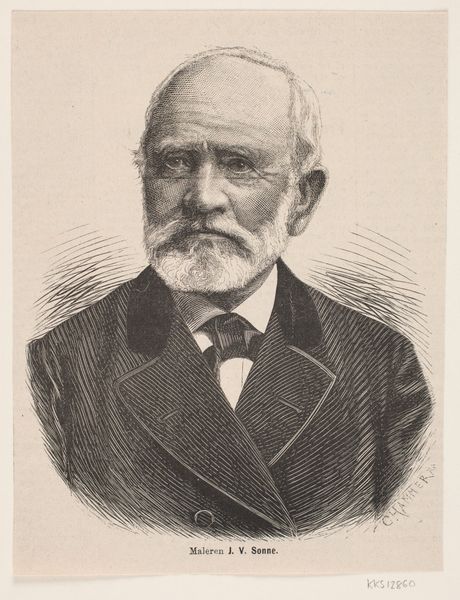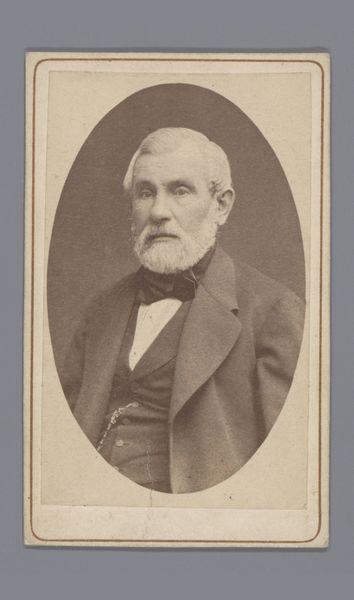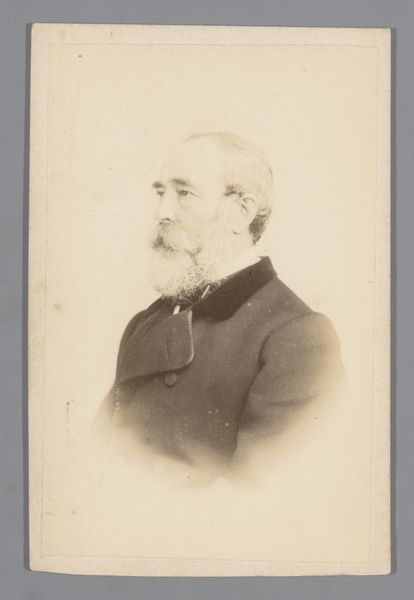
photography, albumen-print
#
portrait
#
photography
#
portrait reference
#
framed image
#
albumen-print
Dimensions: height 140 mm, width 96 mm, height 163 mm, width 107 mm
Copyright: Rijks Museum: Open Domain
Editor: Here we have a photograph titled "Portret van Victor Hugo," dating from around 1870 to 1890. It’s an albumen print by Carjat et Cie., currently housed here at the Rijksmuseum. It's incredible how clear the details are, even now. What strikes me most is how it presents Hugo – seemingly composed and stately. How do you interpret this work? Curator: This albumen print offers a window into the industrialized portraiture of the late 19th century. Rather than focus on Hugo's personal affect, consider the materials and process. Albumen prints involved coating paper with egg white, rendering the image and imbuing a warm tone, requiring specific photographic equipment and specialized labor. Where do you see evidence of this labor? Editor: I notice in the details like the soft focus and the sepia tones, probably created during that albumen printing process. Does that technique allow for much individual expression? Curator: Exactly! The softness speaks to the technical limitations of the time and labor involved, while the tonal range hints at the chemistry at play. Moreover, consider the broader context: photography became increasingly democratized, but the skilled labor in studios like Carjat et Cie., was significant. Hugo, the subject, and Carjat, the producer, both benefit from its reproducibility. Consider the implications of photographic portraiture on mass culture. Editor: So, it's not just about capturing Hugo's likeness, but understanding the industrial and social processes that made this image possible and the power it provided? Curator: Precisely. By examining the means of production—the materials, labor, and the studio system—we uncover the complex interplay between art, technology, and society. We're really investigating the cultural impact this medium enabled at the time. Editor: That completely shifts how I see this portrait. It's not just a picture of a famous person; it's a product of its time. I hadn't considered all the technical effort needed! Curator: It's easy to overlook the materiality, but exploring the origins, materiality, labor, and societal impact opens up incredible avenues of interpretation and re-evaluation.
Comments
No comments
Be the first to comment and join the conversation on the ultimate creative platform.
